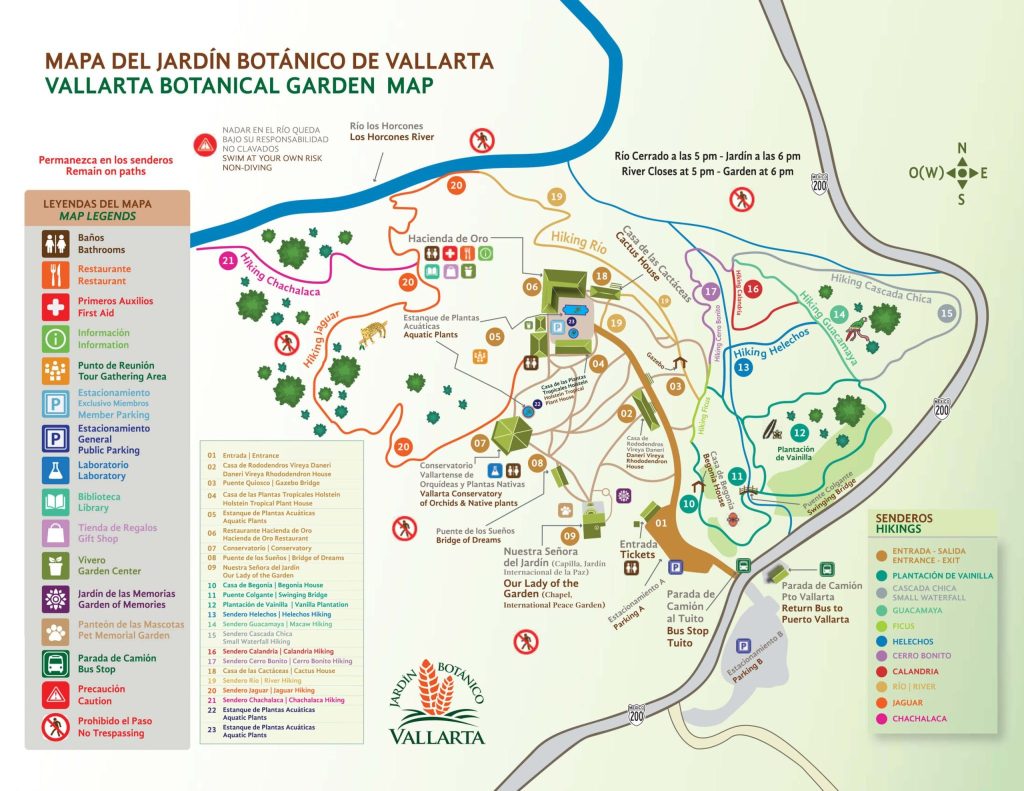Features & Installations
Explore our vibrant plant collections, hike along our forested trails, and enjoy a swim in the river. You will also find a growing collection of Mexican and international art and design on our grounds.

Features
The Vallarta Botanical Gardens offers 8 hectares of natural splendor to explore. Our curated plant collections are found within the Orchid & Native Plants Conservatory, the Cactus House, the Daneri Vireya Rhododendron House, the Begonia House, and the Holstein Tropical Plants house, as well as across the grounds in between.
We cultivate approximately 200 species of orchids and over 100 more hybrids, with many of them in bloom at any given moment. We also maintain two of the most important native tree plantations in Mexico, the Oak and the Magnolia collections, and are part of the Global Conservation Consortiums efforts on both species. And we’re home to hundreds of species of birds and butterflies which you’ll be sure to spot during your visit.
Beyond the curated garden area our grounds include 8 different forested hiking trails you can explore, including some trails down to the beautiful rocky river where it is possible to swim during much of the year (at your own risk).
Art in the Gardens
Our Lady of the Garden Chapel
Inspired by the San Juan Capistrano Mission, the chapel’s interfaith interior design includes a permanent installation artwork made of original photographs of birds and flowers against on watercolor inks printed onto natural fabrics in a joyful rainbow of color.
About the Art
Los Angelitos de Nuestra Señora del Jardín
by David Allen Burns and Austin Young / Fallen Fruit, 2021.
A permanent installation artwork made of original photographs on archival watercolor inks printed onto natural fabrics.
Orchids and hummingbirds dance around above you, intermixed with seasonal flowers from the Gardens’ collection.
This mural, created specifically for our chapel, was made with hundreds of photographs taken by the artists at the Vallarta Botanical Gardens at different times of year. The artists also sourced historic lithographs of indigenous hummingbirds by Mexican botanist, Rafael Montes de Oca, and English ornithologist John Gould.
The title, “Los Angelitos…,” is in honor of the hummingbirds and pollinators, the little angels, that dance around the chapel. The extraordinary flora and fauna of the wider setting is embellished into the interior spaces of the chapel and contextualized in merging color fields. The frame for the art is the building itself; the wall behind the altar represents daytime, and the opposite wall represents night. When standing in the middle of the chapel, you are within a rainbow. It is very likely that you will discover some of the same plants in bloom around the garden if you look carefully.
About the Artists
David Allen Burns and Austin Young’s work began working collaboratively on a project called Fallen Fruit* that originated in Los Angeles by creating maps of public fruit: the fruit trees growing on or over public property. The work of Fallen Fruit includes photographic portraits, experimental documentary videos, and site-specific installation artworks. Using fruit (and public spaces and public archives) as a material for interrogating the familiar, Fallen Fruit investigates urban spaces, bodies of knowledge, and new forms of citizenship. From protests to proposals for utopian shared spaces, Fallen Fruit’s work aims to reconfigure the relationship of sharing and explore understandings of what is considered both — public and private. From their work, the artists have learned that “fruit” is symbolic and that it can be many things; it’s a subject and an object at the same time it is aesthetic. Much of the work they create is linked to ideas of place and generational knowledge, and it echoes a sense of connectedness with something very primal – our capacity to share the world with others. Fallen Fruit is an art collaboration originally conceived in 2004 by David Burns, Matias Viegener and Austin Young. Since 2013, David and Austin have continued the collaborative work. Follow them @Fallen_Fruit.
Artists’ notes for guests:
- We created an immersive artwork specifically designed for the chapel — the frame for the art becomes the building itself. The wall, behind the altar, represents the daytime, and the opposite wall represents the night.
- All the plants and flowers were photographed by the artists at different times of the year at Vallarta Botanical Gardens, and it is very likely that you will discover some of the same plants in bloom around the gardens if you look carefully.
- The hummingbirds and pollinators are photographed from historical drawings from the area.
- The title “Los Angelitos…” is in honor of the hummingbirds and pollinators – the little angels.
- The artwork is made from archival watercolor inks on a natural cotton fabric that is 100% biodegradable but also could last for centuries in the right conditions.
- When we thought about making this artwork we thought about it being a form of a portrait of the Gardens and when inside the chapel we wanted you to be inside all the colors in the world.
Art in the Gardens
International Peace Garden of Mexico
Located on the hillside leading to the open-air chapel Our Lady of the Garden, the International Peace Garden symbolizes the universal longing for harmony among people and cultures. Designed by architects Nick DeLorenzo and César Amezcua, this space merges botanical beauty with a powerful message of reconciliation and hope. Canadian Artist Cheryl Wheeler donated her talent to the project with the creation of a hand-painted floral inspired ceramic tiles display, “The 12 Tenants of Peace”.
The garden’s tiered design forms a natural amphitheater for educational activities, artistic performances, quiet meditation, or simply the joy of being in nature. Plants from the Mediterranean and Middle East, regions where many of the world’s major religions were born, grow side by side with Mexican wildflowers, creating a landscape that celebrates coexistence, respect, and diversity. With sunlight, shade, and vegetation that invite contemplation, this sanctuary was envisioned as an open space for all.
In a time when the future of our world depends on collaboration, this garden reminds us that peace, too, is something we must cultivate one seed at a time.
In 2019 the Vallarta Botanical Gardens began a collaboration with the International Peace Garden Foundation to establish a Peace Garden in Mexico. The International Peace Garden Foundation has gardens in 23 different countries around the world. We invite everyone to enjoy a moment of peace while strolling along the flower-lined pathway, in a space that honors our roots, our differences, and our shared humanity.
In 2019 the Vallarta Botanical Gardens began a collaboration with the International Peace Garden Foundation to establish a Peace Garden in Mexico. The International Peace Garden Foundation has gardens in 23 different countries around the world. We invite everyone to enjoy a moment of peace while strolling along the flower-lined pathway, in a space that honors our roots, our differences, and our shared humanity.

Art in the Gardens
Mexican Cantera Sculpture
Throughout the Gardens you will spot sculptures featuring indigenous Mexican images and iconography. They may look like poured concrete, but in fact all of these works were hand-carved specifically for the Vallarta Botanical Gardens by Alejandro Mondragón, an artisan of cantera from the town of Escolásticas in the Mexican state of Querétaro, located about 750 km east of the Vallarta Botanical Gardens.
Cantera stone is a volcanic rock mined locally in Querétaro and known for its porous, easily carved nature and distinctive natural colors.
As is the case with many Mexican handicrafts and artisan skills, almost the entire town of Escolásticas, and indeed across the surrounding municipality of Pedro Escobedo, specializes in this type of traditional stone carving.
The tradition began there in 1954, when a master stonemason was brought from Guanajuato to teach carving near an abundance of quarries. The residents of Pedro Escobedo quickly perfected their art and have kept it up for generations, today achieving international acclaim.
Learn more about this art form in this short documentary (in Spanish).
